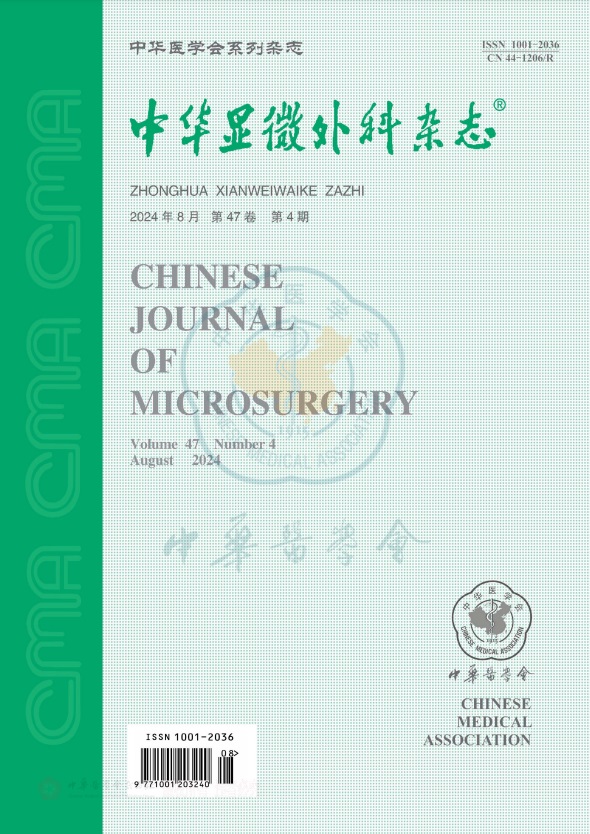Clinical application of island flap with a pedicle of the descending branch of perforating branch from lateral anterior malleolus of peroneal artery in repairing midfoot and forefoot soft tissue defects
引用次数: 0
Abstract
Objective To explore clinical application of the island flap pedicled of the descending branch of perforating branch from lateral anterior malleolus of peroneal artery in repairing the soft tissue defects in midfoot and forefoot. Methods From January, 2010 to December, 2016, based on the anastomosis between the descending branch from a terminal branch of peroneal artery on the anterior aspect of the lateral malleolus and other branches located around the ankle joint and sinus tarsi, island flap with a pedicle could be harvested more distally and to be used in covering the soft tissue defects in midfoot and forefoot of 5 patients. Sizes of the flap were from 15 cm×12 cm to 8 cm×6 cm. All patients were followed-up in outpatient clinic or through WeChat. The appearance of the flaps and ankle function were recorded simultaneously. Results All flaps were survived without any secondary surgeries. During the follow-up of 6-15 months, the texture of flaps was good with satisfactory estheticity. Range of motion at the injured ankle was 15° in dorsi flexion and 25° in plantar flexion. Conclusion The flap with a pedicle of the descending branch of perforating branch from lateral anterior malleolus of peroneal artery is good enough to be used in the reconstruction of soft tissue defects in midfoot and forefoot. Key words: Peroneal artery; Terminal perforating branch; Island flap; Microsurgical technique以腓动脉外踝穿支降支为蒂岛状皮瓣修复足中、前足软组织缺损的临床应用
目的探讨以腓动脉外踝穿支降支为蒂的岛状皮瓣修复足中、前足软组织缺损的临床应用。方法2010年1月~ 2016年12月,在外踝前方腓动脉终支降支与踝关节周围其他分支及跗窦吻合的基础上,将带蒂岛状皮瓣远端切除,用于覆盖5例足中、前足软组织缺损。皮瓣大小从15 cm×12 cm到8 cm×6 cm不等。所有患者均在门诊或微信进行随访。同时记录皮瓣外观及踝关节功能。结果所有皮瓣均成活,无二次手术。随访6 ~ 15个月,皮瓣质地良好,美观性满意。受伤踝关节的活动范围为背屈15°,足底屈25°。结论以腓动脉外踝穿支降支为蒂的皮瓣可用于足中、前足软组织缺损的修复。关键词:腓动脉;末端射孔支管;岛状皮瓣;显微外科技术
本文章由计算机程序翻译,如有差异,请以英文原文为准。
求助全文
约1分钟内获得全文
求助全文
来源期刊
CiteScore
0.50
自引率
0.00%
发文量
6448
期刊介绍:
Chinese Journal of Microsurgery was established in 1978, the predecessor of which is Microsurgery. Chinese Journal of Microsurgery is now indexed by WPRIM, CNKI, Wanfang Data, CSCD, etc. The impact factor of the journal is 1.731 in 2017, ranking the third among all journal of comprehensive surgery.
The journal covers clinical and basic studies in field of microsurgery. Articles with clinical interest and implications will be given preference.

 求助内容:
求助内容: 应助结果提醒方式:
应助结果提醒方式:


